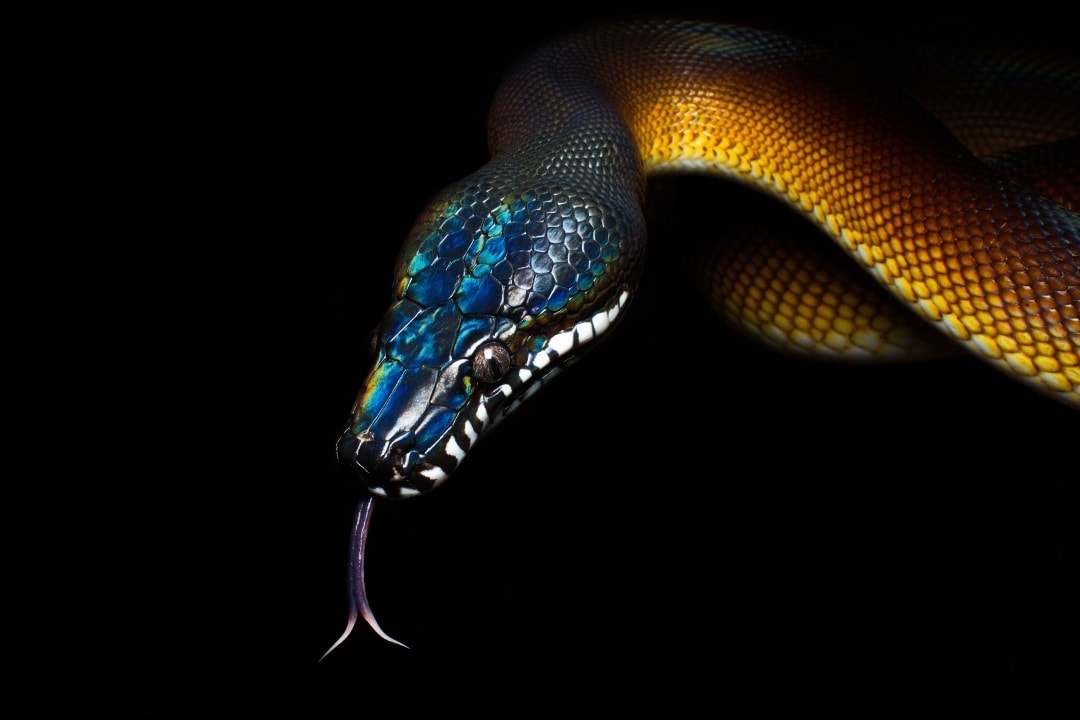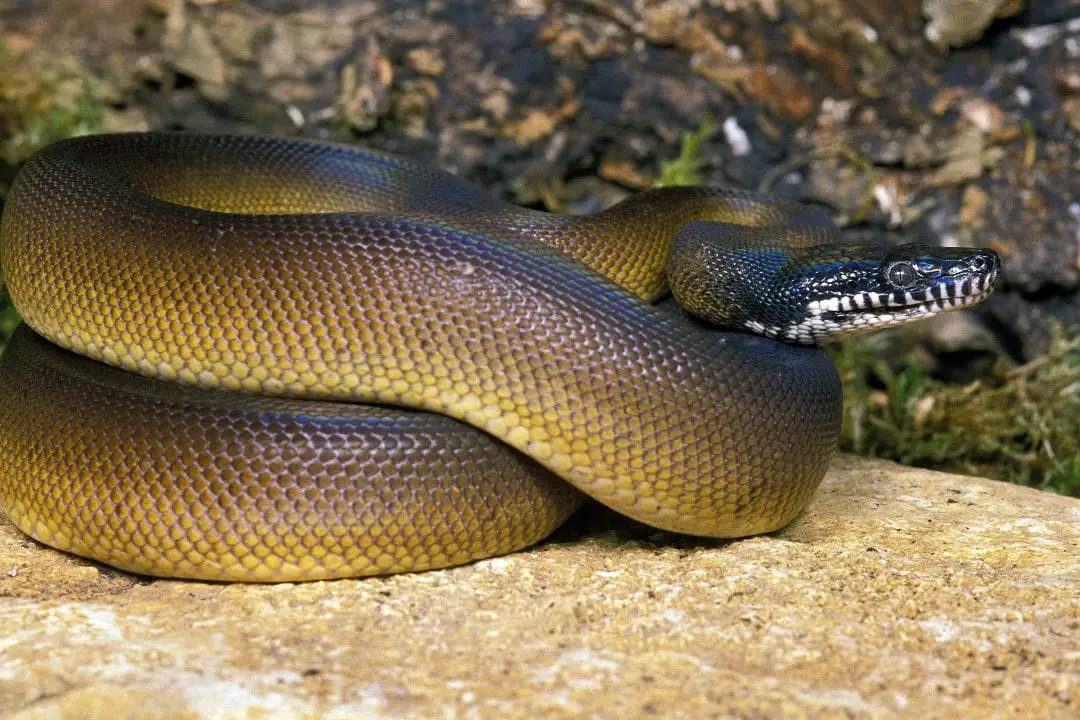The white lipped python has a variety of scientific names, most of them based on the location of the exact subspecies that you’re going to keep.
However, this guide will mostly discuss Bothrochilus albertisii, the northern white-lipped python.
These shiny, oil-slick-like snakes are incredibly popular for intermediate keepers and those who are expanding their collection bit by bit.
Better yet, they fit a comfortable place between the average starter snake (a corn, a king, or a ball python) and some of the more advanced species out there.
Let’s take a look at why that is and how best to keep this wonderful species happy, healthy, and lively for years to come.
Housing
Though this species is quite often found on the ground in its native land, they do occasionally end up in trees hunting small birds and climbing lizards.
Therefore, as of this writing, this genus is considered to be semi-arboreal. Now, what does that mean? Honestly, it simply means that you need to think up as much as you need to think wide.
This won’t be a 20 gallon long aquarium (nor is that appropriate for any semi-arboreal snake) and you will probably be investing a good chunk of money in your housing.
Enclosure Setup
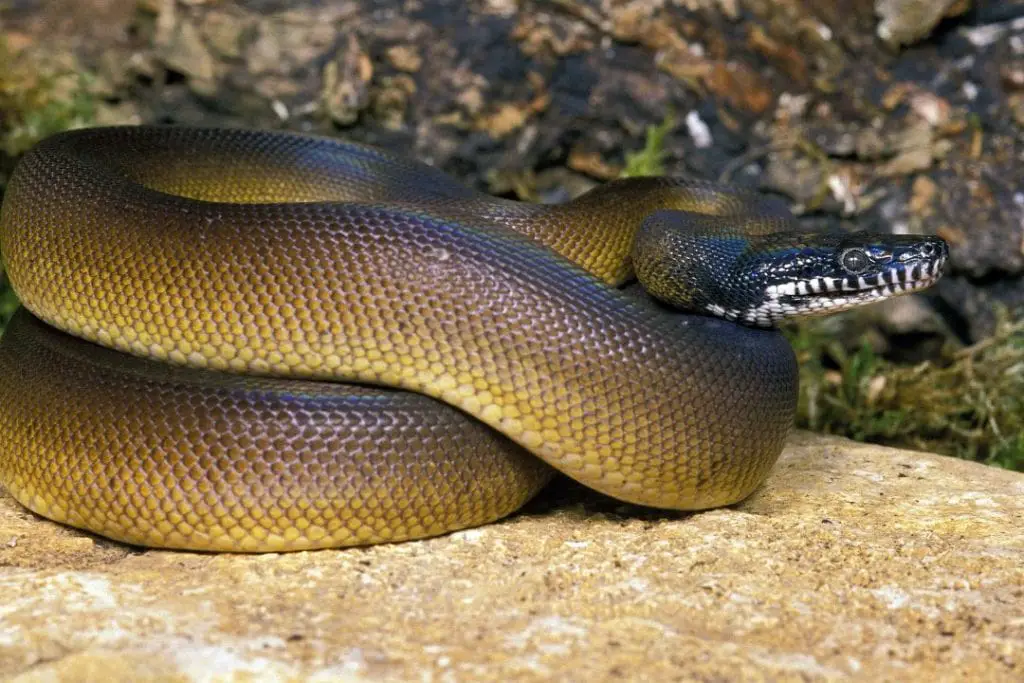
Let’s get this out of the way: in no way, shape, or form do we recommend co-habitating this snake with any other snake like it other than during breeding, nor any other similar species.
These snakes are happy to munch on their own species as much as any other and should be kept separately. That means that you’ll need a separate enclosure for each snake that you have.
But what should that enclosure be like?
What should it look like and how much should you be ready to spend?
Enclosure Size
For adult white lipped pythons, I recommend a front-opening 4 x 3 x 2 ft enclosure at the bare minimum.
Ideally, you are able to place the snake in something even higher than this and allow them more climbing room.
Why front-opening? This is a bite-happy species. They’re wonderful, beautiful, and generally not as aggressive or likely to strike as a green tree python, but they’re still willing to get that bite in when they can.
Since most predation in the wild happens from above, snakes being handled or fed from above, including the white lipped python, are more likely to react poorly to this approach.
In our opinion, you are best off looking at a reptile show or speaking to an experienced custom snake box builder for homes for most snakes of this size.
Substrate
This high-humidity snake requires a substrate that will hold moisture easily without rotting or turning their habitat into a moldy ruin.
Generally speaking, I do not recommend a bioactive habitat for white-lipped pythons.
You can if you want to, but most of them will tunnel, dig, and soak the substrate so much with their endless splashing (they love to swim) that you’re going to end up with too much wet to balance it all properly.
Recommended Substrate
You’ll do better working with a static substrate, such as Reptibark or EcoEarth (coconut coir) and smooth stones over some organic, pet-safe topsoil.
Some people are very big on the idea of giving these snakes a wet hide full of spaghnum moss and cypress mulch. We’ll talk about hides in a while, but I recommend not to do this with this species nor to use a ton of this substrate with them, either.
They seem to hold a little too much moisture and, if happily buried in it for too long (especially near shedding time) it seems to lend to scale rot.
Heating & Temperature
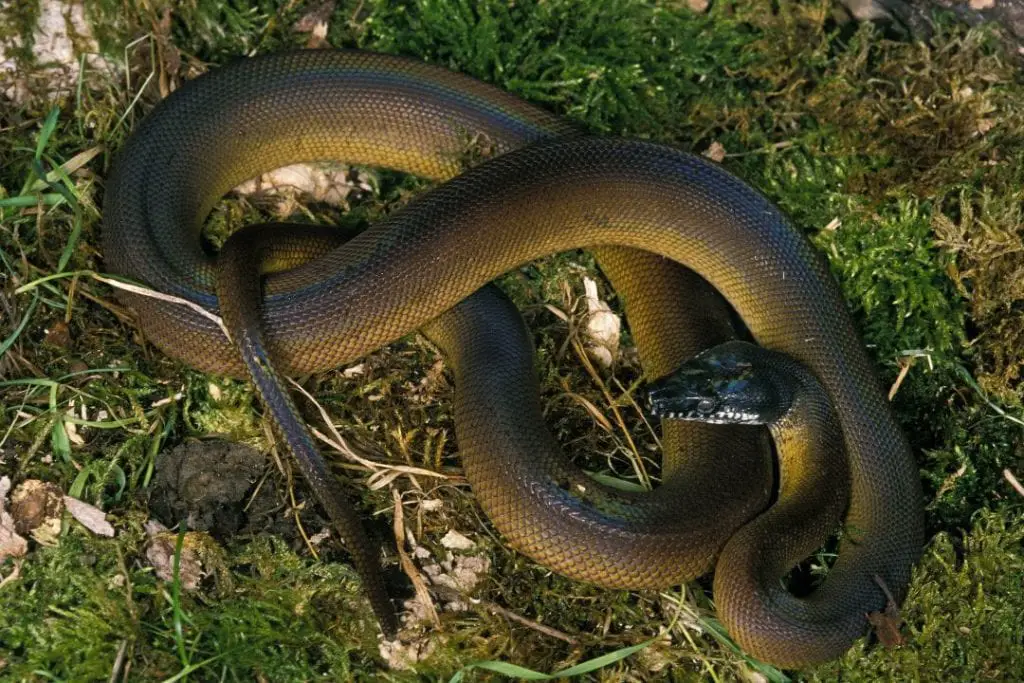
We have a couple of different options with white lipped pythons. Should you know the exact subspecies of your white lipped python, that makes this even easier.
Enclosure Temperature Gradient
Generally speaking, these snakes prefer an F80-ish degree cold side and an F90-ish degree basking side.
Though this is only ten degrees difference, it is important for this species to be capable of digesting and regulating properly.
A carefully regulated heat pad for the “cold” side should be placed against the opposite side of the enclosure.
Remember to place both hygrometers and thermometers on both sides of the enclosure, preferably near the bottom of it, to better eye your temperature regulating.
Probe thermometers/hygrometers work great for this species, and they rarely get tangled.
Light & UVB
Though white-lipped pythons don’t require UV bulbs, mine have seemed happier with a full spectrum bulb offering them that true feeling of day and night.
We give 12 hours of the day and 12 hours of the night as necessary, trying to offer them an enclosure in captivity as close to the wild as they would get.
If you do not want to use full spectrum bulbs due to safety concerns (I get it), then give them a few small LED lights just to give them a day and night cycle. They really do appreciate it.
Shelter & Decoration
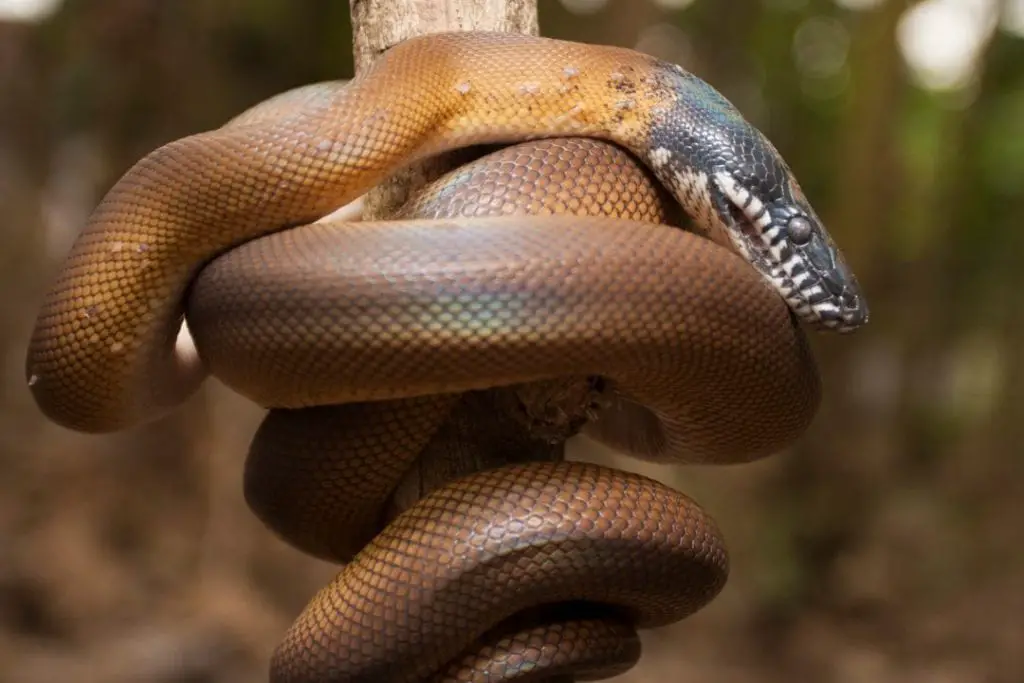
Ah, see? I told you we’d get to hides and shelters.
Easy to work with shelters are cardboard boxes, such as big cereal boxes, or commercially-bought ones that you can find at any pet store.
Make sure to sand extremely rough edges down but allow for something a bit rough here and there so your white-lipped python can shed easier.
Humid hide or no humid hide; that is the question.
So, generally speaking, all of these high humidity-requiring snakes really appreciate a humid hide and a place to swim or soak.
That said, the white-lipped python seems to be particularly prone to scale rot and high humidity for too long, even if the snake wants it, can bring scale rot on very quickly.
I suggest avoiding humid hides with this species, though note that you can experiment with them if you wish. I simply also suggest that you have a vet on speed dial to treat scale rot should it happen.
Water
If you can’t handle a species that uses its water bowl as a toilet, this is not the snake for you. It isn’t once in a while; it is almost every single time in my experience, and it is prolific.
And sometimes you get to tangle with your white-lipped python to clean the muck off of them, should they decide to keep hanging out in the water after using it.
This isn’t to say that this species is particularly filthy; they just don’t seem to mind hanging out in gross water as much as some others do.
That said, simply check your white-lipped python’s water at least twice a day, perhaps three or four times if the snake has recently fed and you’re expecting an extra special surprise in their water soon.
These snakes love to bathe, swim and relax in a water feature, but be aware that you will have to clean it often.
If you are the type that wants to build a palace for your white-lipped python (and why wouldn’t you? go for it!), keep in mind that any water-moving filters are going to be dealing with gunk from your snake and be certain that they can handle it.
I usually recommend simply having a large food storage bin (or other plastic storage bin) within the enclosure for the snake, weighted down with a small piece of brick or concrete block so they can’t flip it and flood everything.
Most of them seem to be perfectly happy with this setup.
Humidity
The white-lipped python comes from a semi-swampy area and primarily lives on the ground in this area. That means they’re built for some extreme humidity… but perhaps not as high as you may think.
White lipped python enclosure humidity levels
Most white-lipped pythons prefer 60-80% humidity in their enclosure. Experiment a little and spray or mist some areas more heavily than others, then see where your snake tends to settle in.
Endeavor to keep their entire enclosure in that particular percentage. Most of mine have enjoyed right at 70-75%, especially on the basking side.
This, of course, is easier said than done. You can hook up an automatic misting system if you prefer to take the guesswork out of your humidity; these systems are usually worked into your hygrometer and spritz or mist when the enclosure becomes less humid than ideal.
Personally, I enjoy misting my reptiles myself. This also, I feel, gives me a better sense of just how much water is going into the enclosure and if I need to wipe down a side if things get a little too moist. It also gives me more time near the enclosure and in working distance with the animals, allowing me to spot a respiratory illness or case of scale rot early on.
Enclosure Maintenance
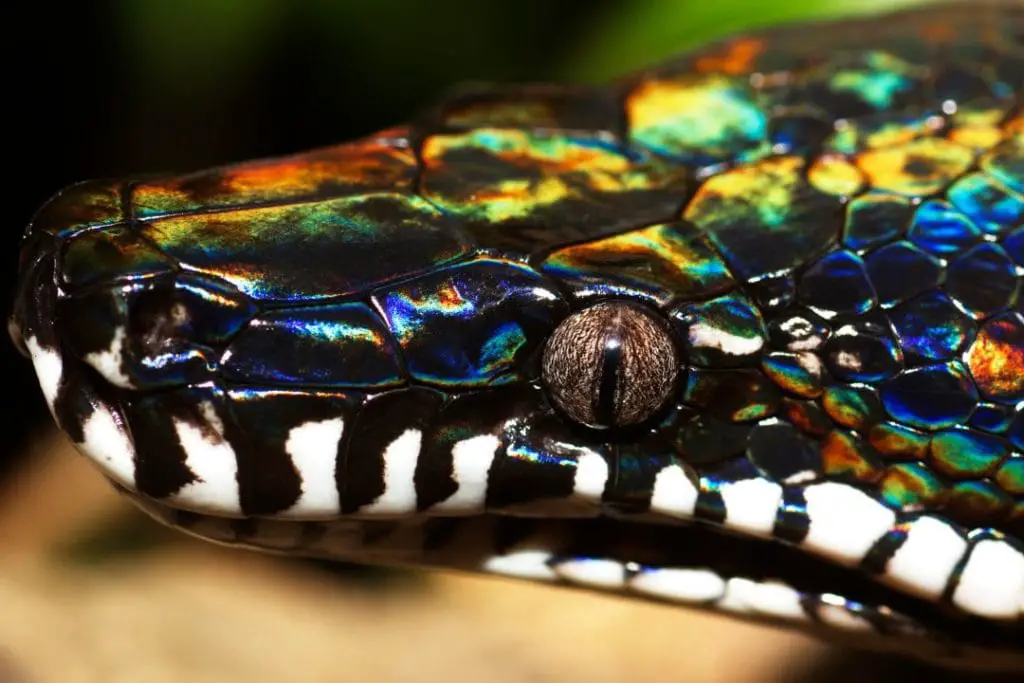
As mentioned before, you’ll be changing your snake’s water on a very common basis. Every chance it gets, it will likely defecate in that water and make you go clean everything out right then and there (and, honestly, with white-lipped pythons; probably while threatening you from a corner).
Check water several times daily, as well as humidity and temperature. Consider getting one of the newer app-related monitoring systems that allows you to see your snake’s parameters while you’re out getting groceries or at work.
Substrate should be fully dumped about once a month, though cleaner snakes may be comfortable with every two months. If you remove your snake for feeding (and I recommend that you do, especially with this species), clean the enclosure while your white lipped python eats.
Beyond that, check seams along enclosure walls for failure or early peeling. White-lipped pythons are characters and love to poke at tiny holes until they are much larger holes. Perhaps, in fact, ones that they can escape through.
Feeding
Feeding your white lipped python is a simple matter of offering prey and allowing the snake to consume it. If your white lipped python is not eating, please consult the health faq down below.
Type & Size of Prey
White lipped pythons tend to hatch at a surprisingly large size. These snakes do not need pinky mice as many others do. Neonate to juvenile white lipped pythons are content with a small mouse or fuzzy rats at the rate of one per week, give or take a day depending on their weight gain and overall growth.
Adults are a little testier. In the wild, they are often observed going without food for weeks (or even months, in poor weather).
We suggest offering a medium to large rat to adults once every two weeks but don’t be surprised if your white-lipped python decides to go without for a time. If losing significant weight, speak with your vet.
You may also choose to feed a varied diet, which is gaining in popularity at this time. For decades, pet snakes have been offered mice, rats, rabbits, and guinea pigs as a typical diet depending on the size of the animal consuming the prey.
Studies have recently shown (especially in zoological settings) that snakes show some benefits overall in eating different types of prey.
Chickens, gerbils, hamsters, quail, ducklings, lizards, and so forth are fantastic choices as long as the prey animal is appropriate.
Frozen vs Live Rats

Live prey is your last-ditch effort to get your white-lipped python to eat. If your snake is raised on live prey, leave it on the reptile show table. Frozen/thawed prey is always the best and safest for both prey animal and your pet predator.
Some people wish to get involved with reptiles because they want to watch the prey/predator cycle occur in the comfort of their own living room.
To them, I suggest watching National Geographic or the Discovery Channel. Injuries can occur when your snake attempts to kill its own prey. Do the hard work for them and avoid a costly vet visit.
Additionally, some mites and other diseases are killed off during the freezing process and leaves your snake all the healthier for it.
Looking for a great resource to buy your prey animals? Micedirect is great.
How often to feed
Neonates and juveniles should have one correctly-sized prey animal per week. Adult white-lipped pythons should be fed approximately every two weeks.
Shedding
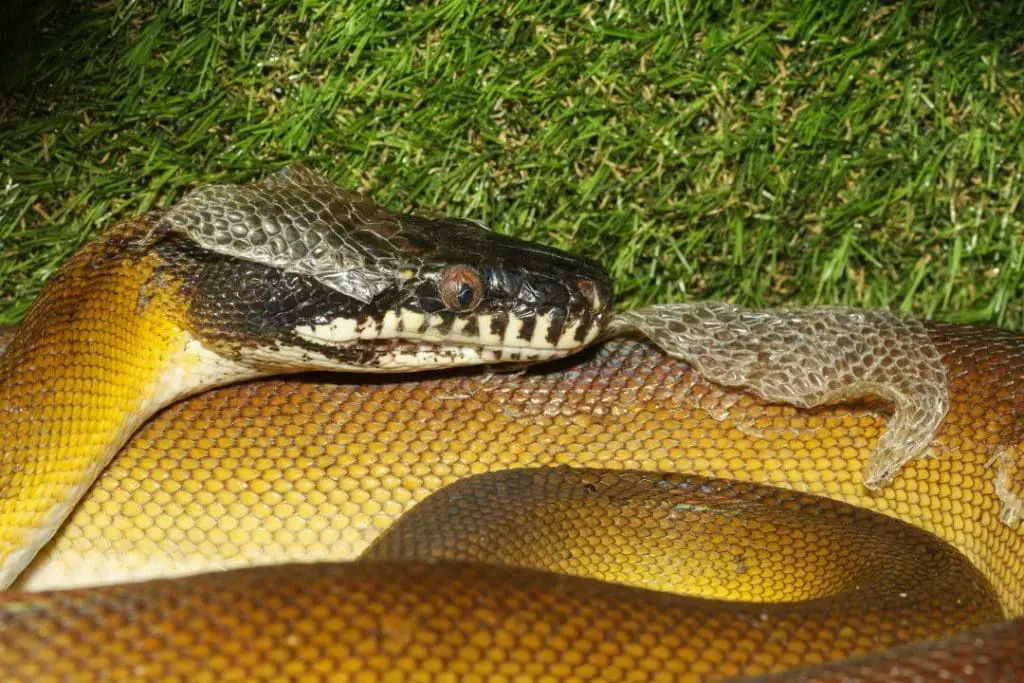
Shedding happens when your white lipped python has outgrown its current skin and needs to slither out of it to continue growing. Unlike us, snakes do not constantly shed their skin cells. They do it in one giant peel, leave the shed skin elsewhere, and continue on with their lives.
You’ll notice that your white-lipped python may appear duller or darker, or perhaps even have milky or “blue” patches over its eyes. These are all signs of an upcoming shed.
But what can you do for your snake as it prepares to shed? Offer a humid hide, a larger water bowl for bathing, and keep your humidity parameters as perfect as possible. The better the snake has a solid, constant source of humidity, the easier it can peel its skin off.
Remember, neonates and juveniles will shed more often than adults simply because they grow faster.
Hibernation
The white-lipped python does not frequently hibernate in the wild and it should not be heavily encouraged in the care of humans.
If you do prefer to let your reptile collection rest throughout your winter and want to try it with this species, I strongly recommend keeping a close watch on this snake as you try it out.
Why? White-lipped pythons are notoriously thin-skinned animals and dehydrate very easily.
Lowering their temperature for hibernation is likely to cause them to drink dangerously low amounts of water, which can easily lead to organ failure, long-term damage, or worse; death.
Handling
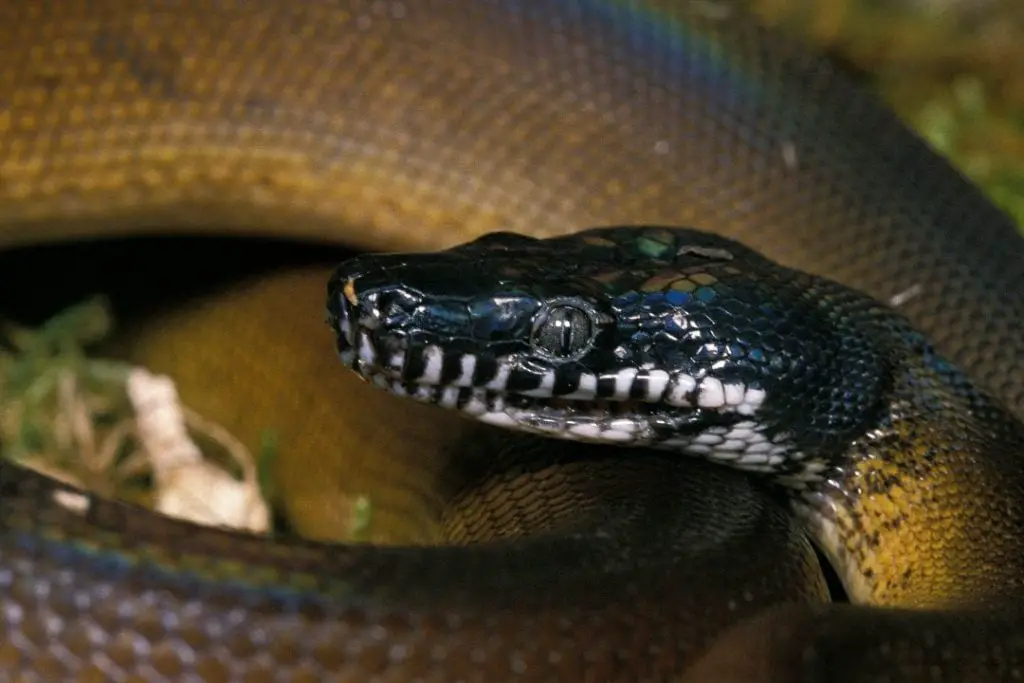
This is more of a “look, don’t touch” species, though some advanced handlers may enjoy adding to their bite collection from bigger, more bitey pythons.
The white-lipped python is nowhere near as bad about biting as some of the more advanced species (we’re looking at you, emerald tree boas), but will still happily take a chunk or two out of their handlers just because they’re curious if you’re dinner.
This includes fully fed heavy white-lipped pythons. Just because they had dinner three days ago doesn’t mean that you’re not a mouse. And they really need to test that.
If you do desire to handle your white-lipped python, get a pair of fireplace gloves or heavy woodworking gloves. You are absolutely going to get bitten, eventually, so go ahead and prepare for it.
That said, the bite really isn’t that bad and they aren’t likely to try to strangle your hand or arm for no reason. Be sensible. Smell like a human or something that isn’t a food item.
Be gentle and try to work with a snake hook if you can.
Handle them young, frequently, and never put them back in the enclosure right after a bite. Well-handled white lipped pythons can be trustworthy companions who only land a nip once in a great while, but it takes a lot of work to get there.
Breeding
This species can be bred whenever the temperature is “right” comparative to its native habitat. Eggs are laid and the young hatch out at about 1 ft in length, ready to care for themselves.
Common Issues
Why is my white lipped python not eating?
It is entirely possible that your white lipped python is not eating simply because it is not hungry. If it is not losing copious amounts of weight or seems to be struggling, don’t worry too much until one of these things happens. Try ‘dancing’ its prey around on tongs or trying other prey sources.
Why is my white lipped python regurgitating?
Your white lipped python is regurgitating because it is stressed or sick. If the white lipped python does not appear to be stressed (nor can you think of any reason why it may be), try again next week. If it regurgitates again, head to your vet. Something serious is wrong.
Help, I think my white lipped python has scale rot or a respiratory infection! If you believe your white lipped python has scale rot or a respiratory infection, we strongly recommend that you head to your veterinarian immediately. Both of these are likely to be viral or bacterial in nature and most snakes do not respond well to home treatment.
Frequently Asked Questions
Resources
- Meet the rainbow white lipped python – Australian geographic
- Regurgitation of Hair Pellets in White Lipped Pythons – Liasis albertisii – British Herpetological Society
NATUSCH, Daniel JD et LYONS, Jessica A. Ecological attributes and trade of white-lipped pythons (Genus Leiopython) in Indonesian New Guinea. Australian Journal of Zoology, 2012, vol. 59, no 5, p. 339-343.
Conclusion
Ultimately, the white lipped python is a varied and beautiful snake that is an ideal display animal for those looking to start keeping more advanced animals.
Between their iridescent scales, flashy white mouths, and bright temperaments, they are worthy of being a centerpiece in your collection.
Do you keep white-lipped pythons? Have you considered them? Tell us your experience with them down below.
We’d love to hear from you! And happy herping!
